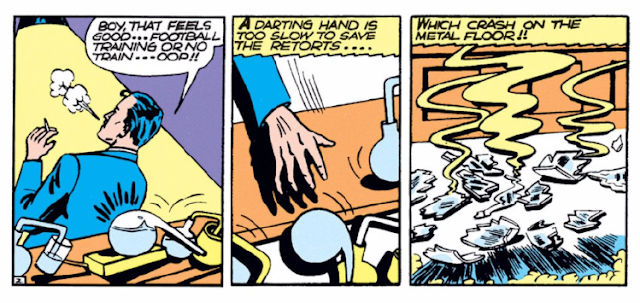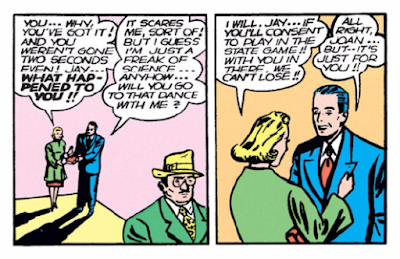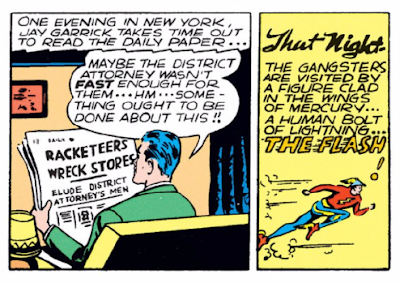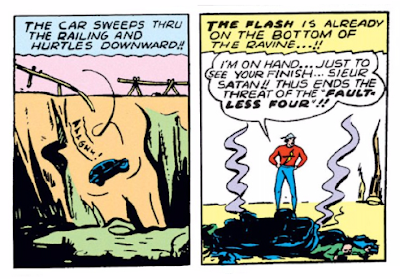Most Amusing Panel Prize (so many to choose from in this issue):
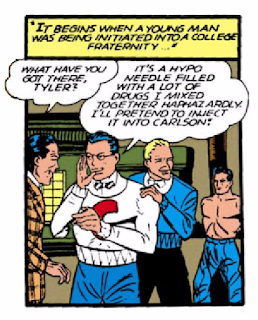 An early sign that hazing at Fraternities has always been hazardous:
An early sign that hazing at Fraternities has always been hazardous:"What you got there, Tyler?"
Oh, it's a hypo "filled with a lot of drugs I mixed together haphazardly. I'll pretend to inject it into Carlson!"
Muwahahahaha... Surely nothing bad will come from that. Har, har, har.
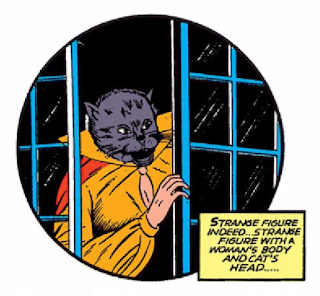 I have chosen to focus on The Cat story from this issue because I cannot get over how the Cat-Woman's first appearance as the "Cat-Woman" (and not just "The Cat") includes having an actual Cat-head mask. (A cat-head with no neck, mind you.)
I have chosen to focus on The Cat story from this issue because I cannot get over how the Cat-Woman's first appearance as the "Cat-Woman" (and not just "The Cat") includes having an actual Cat-head mask. (A cat-head with no neck, mind you.)Surprising Details (there's nothing really surprising here):
As one might expect from a story written in the 1940's and featuring a female "villain," gratuitous evidence of male chauvinism abounds. (Heck, even Commissioner Gordon succumbs to a bout of male rage at the idea of a woman eluding the apparently all-male police force.)
Taking the stereotypical trope associating women with "cat-fighting," Cat-Woman threatens to "scratch out" the eyes of the duper who has double-crossed her in a diamond heist.
As Batman reluctantly (and apologetically) resigns himself to turning the Cat-Woman into the police for her part in the crime, she performs the perfect feminine escape technique of thanking Batman with a kiss (and a shove) as she makes a speedy exit.
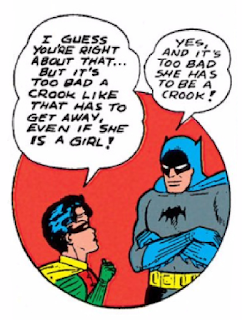 Batman is not too broken up over this slight to his own masculine crime-fighting capacities (I'm not sure if this makes him more sexist or less, but I'm going with less), much to Robin's dismay.
Batman is not too broken up over this slight to his own masculine crime-fighting capacities (I'm not sure if this makes him more sexist or less, but I'm going with less), much to Robin's dismay.Batman doesn't seem to mind that a she has "beaten" a him, though Robin seems to think that there may be a double standard at play.
Batman's romantic ardor is reciprocated as Cat-Woman imagines Batman taking over the wheel (quite literally) and going "for a ride" with him "like any other boy and girl."
 (Granted, Batman has seen her out of her disguise three times now, but she still has no idea who he is under that cowl, but reciprocity nonetheless.)
(Granted, Batman has seen her out of her disguise three times now, but she still has no idea who he is under that cowl, but reciprocity nonetheless.)Final Notions:
Despite the historical gender-baggage on Cat-Woman's shoulders, I still find her a strong female character even in these earliest issues. She works (she takes jobs as a criminal, yes, but it's still work); she is independent (and relies on no man for her subsistence), and she is tough and scary to those who have crossed her (righteous, even, in her threats to scratch them).
There is good reason why Catwoman and Lois Lane have been enduring icons of comic book women. They are complete women on their own heroic adventures. Their stories intersect with those of their male counterparts, but there is a very real sense that their stories continue on even outside the presence of Bruce Wayne/Batman and Clark Kent/Superman.
Series: Batman (1940)
Issue #: 003
Copyright: DC Comics
Cover Date: Fall 1940
Cover Price: 10¢
Page Count: 54 pages
Print Release: 24-July-1940
Digital Release: 25-May-2011
Writer:
|
|
|
Penciler:
|
||
Inkers:
|
||
Colorist:
|
None Listed
|
|
Cover Art:
|
||
Source Links:
|
||
Story Titles:
|
“The Strange
Case of the Diabolical Puppet Master”; “The Ugliest Man in the World”; The
Crime School for Boys”; “The Batman vs the Cat-Woman”
|
|
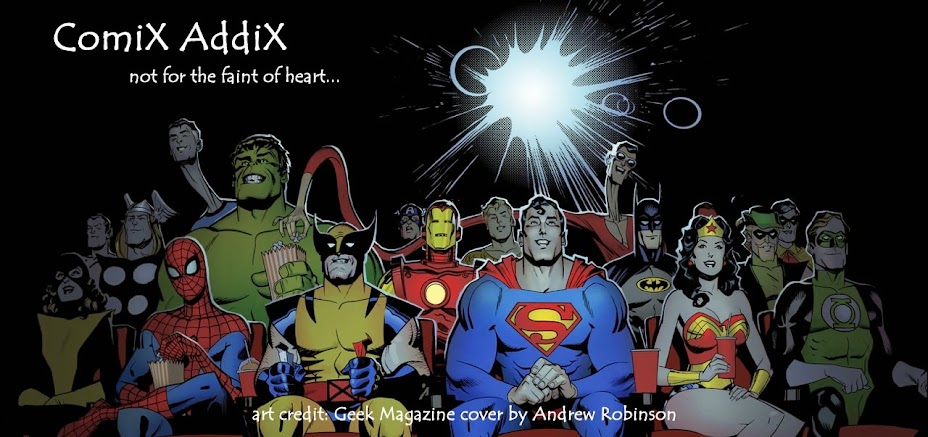







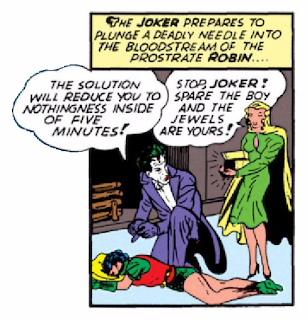

















![Batman (1940) #1 Page 24 Panel 8: Batman "hate[s] to take human life" unless it is necessary. Batman (1940) #1 Page 24 Panel 8: Batman "hate[s] to take human life" unless it is necessary.](https://4.bp.blogspot.com/-DtbJiIfgeAM/Vztn_gzOyiI/AAAAAAAAFJg/5XWTqOwSZ-UR3jOU2uiPwQ9E0gkLmMKqQCLcB/s400/killingsm.png)


